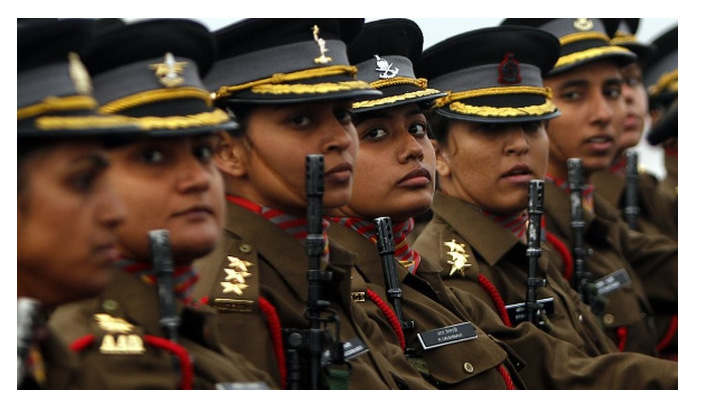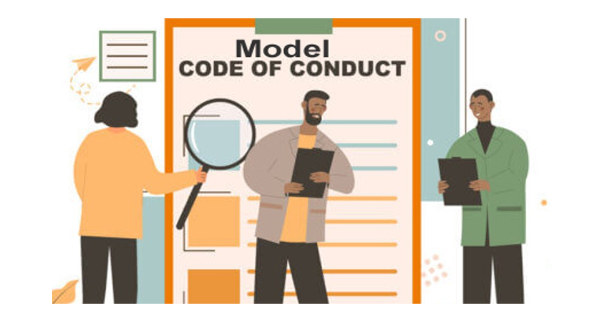Thursday, 7th December 2023
NCRB’s Crime in India 2022 Report
In News: The National Crime Records Bureau (NCRB) has released its annual report titled "Crime in India for 2022," offering a detailed summary of crime patterns across the country.

Key Insights from NCRB's Crime in India 2022 Report
- Overall Crime Statistics
- A total of 58,00,000 cognizable crimes were registered, indicating a 4.5% decline from 2021.
- Crime Rate Decline
- Crime rate per lakh population decreased from 445.9 in 2021 to 422.2 in 2022.
- Safest City Rankings
- Kolkata secured the title of the safest city for the third consecutive year.
- Pune and Hyderabad followed as the second and third safest metropolises.
- Rise in Cyber Crimes
- Cybercrime reporting increased by 24.4%, totaling 65,893 cases, with cyber fraud constituting the majority.
- Suicides and Causes
- Over 1.7 lakh suicides were reported in 2022, with causes including family problems, marriage-related issues, bankruptcy, unemployment, and illness.
- Maharashtra reported the highest number of suicides.
- Escalating Crimes Against SCs and STs
- A general increase in crimes and atrocities against Scheduled Castes (SC) and Scheduled Tribes (ST) persons, notably in states like Rajasthan, Madhya Pradesh, Chhattisgarh, and Telangana.
- Crimes Against Women
- 4,45,256 cases of crime against women were reported in 2022, reflecting a 4% increase from 2021.
- Crimes Against Children
- Crimes against children rose by 8.7%, with a majority related to kidnapping and abduction.
- Crime against Senior Citizens
- Cases rose by 9.3%, with a significant portion related to hurt, theft, and forgery.
- Animal Attacks on the Rise
- A 19% increase in people dying or getting injured due to animal attacks.
- Maharashtra reported the highest number of cases.
- Offences Against the State
- A slight increase in offences against the State, with a 25% rise in cases under the Unlawful Activities Prevention Act (UAPA).
- Rise in Economic Offences
- Economic offences, including forgery, cheating, and fraud, saw a substantial increase.
- Crimes Against Foreigners
- A 28% increase in cases registered against foreigners, with the majority of victims from Asia.
- High Chargesheeting Rates
- States with the highest charge sheeting rates under IPC crimes are Kerala, Puducherry, and West Bengal.
Source: DTE
Coastal Erosion - Edukemy Current Affairs
In News: The Minister of State for Environment, Forest, and Climate Change provided data on shoreline changes in India from 1990 to 2016, based on satellite images and surveys by the National Centre for Coastal Research (NCCR).

Key Findings of NCCR on Coastal Erosion
- Coastal Erosion Overview
- Certain segments of India's coastline experience erosion due to natural factors or human-induced activities.
- Shoreline Analysis
- The analysis indicates that 34% of the coastline is undergoing erosion, 28% is experiencing accretion, and 38% remains stable.
- State-wise Erosion Patterns
- State-specific examination reveals that West Bengal (63%) and Pondicherry (57%) witness erosion exceeding 50%, followed by Kerala (45%) and Tamil Nadu (41%).
- Accretion in Odisha
- Odisha is the sole coastal state where more than 50% of the coastline experiences accretion.
- Implications of Receding Coastline
- The diminishing coastline poses a threat to land, habitat, and the livelihood of fishermen.
- Adverse impacts include the loss of space for boat parking, net mending, and fishing operations.
Government Initiatives to Address Coastal Erosion
- Hazard Line Determination
- The Ministry of Environment, Forest & Climate Change (MoEFCC) has established the hazard line for the entire coastal region of the country.
- This line serves as an indicator of shoreline changes, incorporating factors like sea level rise due to climate change.
- It is utilized by Coastal States for Disaster Management, guiding the planning of adaptive and mitigation measures.
- Integration into Coastal Zone Management Plans
- The hazard line is incorporated into the new Coastal Zone Management Plans of Coastal States/Union territories, approved by the MoEFCC.
- Coastal Regulation Zone Notification, 2019
- The MoEFCC has issued the Coastal Regulation Zone Notification, 2019, aiming to conserve and safeguard coastal stretches and marine areas.
- The regulations allow for the implementation of erosion control measures along the coast.
- No Development Zones (NDZ)
- The notification establishes No Development Zones (NDZ) in various categories of coastal areas, safeguarding India's coastline from encroachment and erosion.
- Flood Management Scheme
- Under the Ministry of Jal Shakti, the Flood Management Scheme addresses anti-sea erosion measures, executed by State Governments based on their priorities.
- The Union Government provides technical, advisory, catalytic, and promotional assistance to the states.
- Coastal Management Information System (CMIS)
- Initiated under the Central Sector Plan Scheme "Development of Water Resources Information System."
- CMIS involves data collection for near-shore coastal areas, aiding in the planning, design, construction, and maintenance of site-specific coastal protection structures.
- Coastal Erosion Mitigation
- Implemented in locations like Puducherry and Chellanam in Kerala, contributing to the restoration and protection of coastal areas.
- Technical support is extended to coastal States for the design of protection measures and the preparation of Shoreline Management Plans in vulnerable stretches.
|
UPSC Previous Year Questions Prelims (2014) Q. In India, the problem of soil erosion is associated with which of the following?
Select the correct answer using the code given below (a) 1 and 2 only Ans: (b)
|
Source: PIB
Special Inquiry Committee - Edukemy Current Affairs
In News: The Lok Sabha ethics committee reportedly suggested the expulsion of a Member of Parliament from the Trinamool Congress for alleged unethical conduct.
Special Inquiry Committees in India: An Overview
- Special Inquiry Committees (SICs) are temporary bodies constituted by the Indian government or Parliament to investigate specific, time-bound issues of public interest.
- They play a crucial role in ensuring accountability, transparency, and good governance in the country.
Types of SICs:
- Parliamentary SICs:
- These are set up by either house of Parliament (Lok Sabha or Rajya Sabha) to investigate matters related to the conduct of its members, financial irregularities, or other issues of national importance.
- Government SICs:
- These are constituted by the central government or state government to inquire into specific incidents, accidents, or controversies related to public affairs, administration, or policy implementation.
Functions of SICs:
- Investigate: SICs gather evidence, examine witnesses, and analyze documents to establish the facts surrounding the issue under investigation.
- Analyze: They critically assess the situation, identify the causes and consequences of the issue, and determine any wrongdoing or negligence.
- Recommend: Based on their findings, SICs recommend corrective measures, policy changes, or disciplinary action against individuals or organizations responsible.
Powers of SICs:
- Summon witnesses and compel them to provide evidence.
- Obtain documents and records from government departments and private entities.
- Visit and inspect relevant sites and facilities.
- Appoint experts and advisors to assist in the investigation.
Significance of SICs:
- Ensure accountability: SICs hold individuals and organizations accountable for their actions, preventing corruption and promoting responsible governance.
- Uphold transparency: They bring to light crucial information about issues of public concern, fostering transparency and public trust.
- Improve governance: Recommendations from SICs inform policy decisions and lead to reforms that improve the efficiency and effectiveness of government administration.
Notable Examples of SICs in India:
- Joint Parliamentary Committee on Bofors scandal
- Special Investigation Team on Black Money
- Justice Verma Committee on Rape Laws
- Justice Mudgal Committee on IPL spot-fixing scandal
Challenges and criticisms:
- Politicization of SICs: Sometimes, SICs are accused of being biased or influenced by political considerations.
- Limited scope and effectiveness: Investigations may be limited in scope or timeframe, potentially impacting their effectiveness.
- Implementation of recommendations: Ensuring the implementation of SIC recommendations remains a major challenge.
Conclusion:
Despite these challenges, Special Inquiry Committees remain a vital tool for ensuring accountability and good governance in India. Their contributions to uncovering wrongdoing, promoting transparency, and informing policy changes are undeniable. Continuous efforts are needed to strengthen the independence, effectiveness, and implementation of SIC recommendations for them to fully realize their potential.
Source: TH
Federal Democracy - Edukemy Current Affairs
In News: As armed resistance escalates in Myanmar against the Myanmar military, India issued a reminder for Myanmar to re-embrace federal democracy
About Federal Democracy
A federal democracy, often referred to as a federal democratic system or federal republic, is a form of government that combines elements of federalism and democracy. In a federal democracy, political authority and power are divided and shared between a central or national government and regional or state governments. This system aims to strike a balance between a strong, unified central authority and the autonomy of individual regions or states.
Key features of a federal democracy include:
- Division of Powers
- There is a clear division of powers and responsibilities between the central government and regional or state governments.
- The constitution typically outlines the specific powers granted to each level of government.
- Autonomy of States
- States or regions within the country maintain a degree of self-governance and have the authority to make decisions on matters that directly affect their populations.
- This includes areas like education, law enforcement, and local governance.
- Elected Representatives
- Citizens participate in the democratic process by electing representatives at both the national and regional levels.
- These elected officials are responsible for making laws, representing their constituents, and overseeing the functioning of the government.
- Constitutional Framework
- Federal democracies have a written constitution that serves as the supreme law of the land.
- The constitution outlines the structure of the government, the distribution of powers, and the rights and responsibilities of citizens.
- Independent Judiciary
- An independent judiciary is crucial in ensuring that the distribution of powers and protection of rights are maintained.
- The judiciary acts as a check on the actions of both the central and regional governments.
- Flexibility and Adaptability
- Federal democracies often display a level of flexibility to adapt to diverse regional needs and changing circumstances.
- States may have the authority to make laws that are specific to their unique situations.
Examples of countries with a federal democratic system include the United States, India, Canada, Germany, Australia, and Brazil. Each of these countries has its own unique model of federalism, reflecting historical, cultural, and constitutional variations. The federal democratic system is valued for its ability to accommodate diverse populations, promote local governance, and prevent the concentration of power in a single authority.
Source: TH
CAG - Edukemy Current Affairs - Edukemy Current Affairs
In News: Recently, the Chief Minister recommended a 15-year audit of the Delhi Jal Board (DJB) accounts by the Comptroller and Auditor General (CAG) of India.
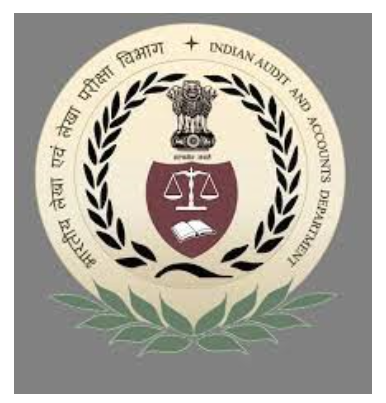
About Comptroller and Auditor General (CAG)
- Overview
- The CAG, a position established as an independent authority under the Indian Constitution, serves as the head of the Indian Audit and Account Department.
- Holding the pivotal role of being the Chief Guardian of the Public Purse, the CAG plays a vital role in upholding accountability within the government and other public entities responsible for the expenditure of public funds.
- Key Responsibilities
- The CAG acts as a critical institution ensuring the accountability of the government and various public authorities.
- This accountability extends to Parliament and State Legislatures, ultimately serving the interests of the public.
- The CAG's role is integral in maintaining transparency, fiscal responsibility, and effective financial management across the public sector.
Evolution of the Comptroller and Auditor General (CAG) in India
- Historical Development
- Established in 1858, the Office of the Accountant General marked the inception of financial oversight in India during British colonial rule.
- Sir Edward Drummond became the first Auditor General in 1860, and subsequent restructuring led to the title "Comptroller and Auditor General of India" in 1884.
- Legal Independence
- Under the Government of India Act 1919, the Auditor General gained statutory independence, further solidified by the Government of India Act 1935, which introduced Provincial Auditors General in a federal structure.
- Post-Independence Constitutional Provision
- Article 148 of the 1949 Indian Constitution established the Comptroller and Auditor General, appointed by the President.
- The CAG's jurisdiction expanded to Jammu and Kashmir in 1958.
- Legislative Framework (1971)
- The Comptroller and Auditor General (Duties, Powers, and Conditions of Service) Act, 1971, conferred comprehensive responsibilities for both accounting and auditing duties on the CAG for central and state governments.
- Specialization and Modernization
- In 1976, the CAG's role was refined, relieving it from accounting functions.
- Subsequently, the CAG underwent significant computerization and modernization efforts since the 1990s.
- Vigilance Against Corruption
- The CAG, vigilant against corruption, has audited and investigated major corruption scandals in India's history.
- Its role in scrutinizing financial practices remains pivotal in ensuring transparency and accountability.
Source: TH
Garba Dance - Edukemy Current Affairs
In News: The traditional dance form of Gujarat, Garba, has been included in UNESCO's Intangible Cultural Heritage list.

Garba: A Vibrant Gujarati Dance Celebrating Devotion and Femininity
- Garba, a traditional dance hailing from the Indian state of Gujarat, is performed in October to pay homage to the Hindu Goddess of Divinity, Durga.
- This joyful dance form follows a circular pattern, characterized by sweeping movements from side to side.
- Garba performances are a lively affair, incorporating singing and musical accompaniment, traditionally provided by instruments like the dhol and dholak. Hand clapping and various metallic idiophones, including cymbals, add to the rhythmic fervor.
- These dances, deeply rooted in cultural traditions, celebrate fertility, honor womanhood, and express reverence for a multitude of mother goddesses.
- In Gujarat, Garba dances hold special significance, marking milestones such as a girl's first menstrual cycle and, later, her impending marriage.
- Additionally, these vibrant dances take center stage during the auspicious nine-day Navratri festival.
Source: TH
All India Council for Technical Education (AICTE)
In News: From 2024-25 onward, AICTE will regulate undergraduate courses like BBA and BCA.
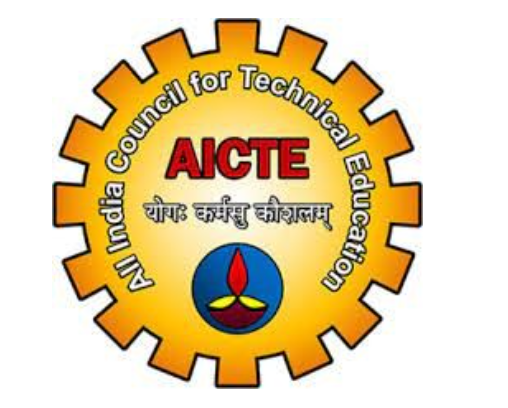
Establishment and Mandate of the All India Council for Technical Education (AICTE)
- Founded in November 1945, the All India Council for Technical Education (AICTE) was established as a national-level apex advisory body.
- Its primary objective was to conduct a comprehensive survey on the existing technical education facilities and promote coordinated and integrated development throughout the country.
- In alignment with the National Policy on Education (1986), the AICTE is entrusted with several key responsibilities, including statutory authority for planning, formulation, and maintenance of norms and standards.
- It plays a crucial role in ensuring quality assurance through accreditation, providing funding in priority areas, monitoring and evaluation, maintaining consistency in certifications and awards, and overall management of technical education in the nation.
Source: TH
NCERT - Edukemy Current Affairs
In News: NCERT advocates shifting away from a colonial mindset and promoting the utilization of Bharatiya languages.
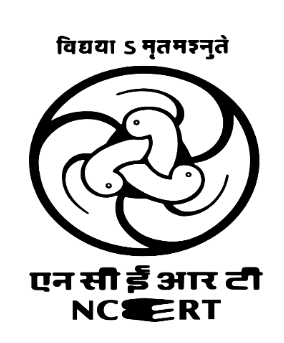
National Council of Educational Research and Training (NCERT): Nurturing Educational Excellence
- The National Council of Educational Research and Training (NCERT) is a pivotal institution in India's educational landscape.
- Established with a national-level mandate in November 1945, its core objective is to conduct comprehensive surveys on the state of technical education facilities and facilitate coordinated development across the country.
- According to the National Policy on Education (1986), NCERT is entrusted with a multifaceted role.
- It holds statutory authority for the planning, formulation, and maintenance of norms and standards in education.
- Beyond that, NCERT actively ensures quality assurance through accreditation processes, directs funding to priority areas, oversees monitoring and evaluation mechanisms, maintains consistency in certifications and awards, and takes charge of the overall management of technical education in India.
- As a beacon of educational excellence, NCERT continues to shape the educational landscape, playing a crucial role in maintaining and advancing the standards of technical education across the nation.
Source: TH
Gemini - Edukemy Current Affairs
In News: Google is stepping up its game in the race for AI with Gemini, a technology that's trained to act more like humans.

Gemini: Google's Powerful Multimodal AI
Gemini, unveiled at Google I/O 2023, is a groundbreaking AI model promising to revolutionize the way we interact with technology. Built from the ground up, Gemini boasts impressive capabilities across various modalities, making it a versatile and powerful tool for developers and users alike.
Key Features of Gemini:
- Multimodality: Gemini seamlessly integrates different modalities like text, code, images, and speech, allowing it to understand and respond to complex queries and tasks involving multiple types of data.
- Highly Efficient: Designed for efficient tool and API integrations, Gemini can be readily incorporated into various applications and workflows, unlocking new possibilities.
- Future-Ready: Built with future advancements in mind, Gemini is capable of incorporating memory and planning functionalities, paving the way for even more sophisticated AI applications.
- Benchmark Performance: Gemini Ultra, the largest version, achieved a groundbreaking 90.0% score on the MMLU (Massive Multitask Language Understanding) benchmark, outperforming even human experts in a combination of 57 subjects, showcasing its exceptional knowledge and problem-solving abilities.
- Scalable Solutions: Gemini comes in three sizes - Ultra, Pro, and Nano - offering developers and businesses a range of options to choose from based on their specific needs and computational resources.
Potential Applications of Gemini:
- Creative Content Generation: Gemini can generate various creative text formats like poems, scripts, musical pieces, and code, empowering artists and writers.
- Advanced Search and Information Retrieval: With its ability to understand multiple modalities, Gemini can revolutionize search engines by providing more accurate and relevant results.
- Personal Assistants and Virtual Agents: Gemini's natural language processing and conversational skills make it ideal for developing next-generation personal assistants and virtual agents.
- Scientific Research and Data Analysis: Gemini's analytical capabilities can be harnessed for scientific research and data analysis, leading to groundbreaking discoveries and innovations.
- Education and Learning: By personalizing learning experiences and tailoring content to individual needs, Gemini can enhance the educational experience for students of all ages.
Source: TH
Snake Bite Deaths - Edukemy Current Affairs
In News: A team of experts from a UK university has initiated a pilot study in Burujhari village, Odisha, India, aiming to decrease the fatalities caused by Snakebite Envenoming.
Snakebite Envenoming (SE)
- SE is a life-threatening condition from venom injection, often resulting from snakebites.
- Global impact is significant in rural regions of Africa, the Middle East, Asia, Oceania, and Latin America.
- WHO's roadmap (2019) aims to halve snakebite-related deaths and disabilities by 2030.
- Deaths range from 81,410 to 137,880 annually, as per WHO estimates.
- India, pre-empting WHO, initiated efforts in 2013 through ICMR with a National Action Plan.
- Focus areas include creating a global antivenom stockpile and integrating snakebite treatment into national health plans.
Source: DTE
Exploring the Implicit Expenditures within Agrifood Systems
In News: In its publication, The State of Food and Agriculture 2023, the Food and Agriculture Organization
elucidates the concealed expenditures within our agrifood systems and examines their ramifications.
Unveiling the Unseen Expenses of Food and Agriculture
- Hidden expenses within agrifood systems encompass environmental outlays stemming from greenhouse gas and nitrogen emissions, water consumption, and land-use alterations.
- Additionally, health-related covert costs arise from diminished productivity due to unhealthy dietary habits, while social concealed costs emerge from the economic toll of poverty and productivity setbacks linked to undernourishment.
- The State of Food and Agriculture 2023 represents the inaugural effort by the FAO to evaluate these obscured costs on a national scale, encompassing 154 countries.
Key Global Insights from the Report
- The concealed costs of agrifood systems globally amounted to approximately 12.7 trillion dollars in 2020, measured at purchasing power parity (PPP), nearly constituting 10% of the world GDP in PPP terms.
- Dietary patterns contributing to obesity and non-communicable diseases (NCDs) were responsible for 73% of the global quantified hidden costs in 2020, leading to labor productivity losses.
- Environmental hidden costs from agriculture, comprising over 20% of the quantified hidden costs, equate to nearly one-third of agricultural value added.
- To lift the moderately poor working in agrifood systems above the moderate poverty line, it is estimated that incomes need to increase by 57% in low-income countries and 27% in lower-middle-income countries on the social front.
- These findings underscore the immediate necessity of incorporating these costs into decision-making processes for a transformative shift in agrifood systems.
Key Insights for India from the Report
- India's total hidden costs within agrifood systems reached approximately USD 1.1 trillion, ranking as the third-largest globally, following China and the United States.
- India's contribution accounted for 8.8% of the global quantified hidden costs of USD 12.7 trillion associated with agrifood systems.
- In comparison, China contributed 20%, and the United States contributed 12.3%, as outlined in the FAO's report.
- Within India, the largest share (60%) of hidden costs pertained to the burden of disease, indicating productivity losses due to dietary patterns.
- This was followed by the social cost of poverty among agrifood workers (14%) and the environmental cost associated with nitrogen emissions (13%).
- The report underscores the imperative to redirect support towards transforming agrifood systems, highlighting the importance of delivering healthy and environmentally sustainable diets to all.
Unveiling the Socio-Ecological Ramifications of Intensive Agricultural Practices in India
Impact on Society:
- Disruption of Indigenous Systems:
- The adoption of seeds from multinational corporations and the widespread use of fertilizers have undermined seed sovereignty, disrupted traditional knowledge systems, and shifted from diverse crops to mono-crop plantations.
- Traditional Farming Resilience:
- Conversely, traditional farming practices in India, exemplified by the Barahnaja crop diversification system in the Garhwal Himalayan region, involve cultivating 12 crops in a year, providing stability and aligning with natural processes.
- Rising Indebtedness:
- Privatization and deregulation of agricultural inputs have contributed to increased indebtedness among agrarian households, with the debt-to-asset ratio soaring by 630% between 1992 and 2013.
- Diminishing Agrarian Income:
- Agricultural viability in India has diminished significantly, reflected in the meager average monthly household income of farming households, which stands at ₹10,816.
Impact on Ecology:
- Soil Fertility Decline:
- Intensive farming practices, such as monoculture without adequate crop rotation, can deplete essential nutrients from the soil, impacting its fertility.
- Groundwater Over-Extraction:
- With heavy reliance on irrigation, agriculture in India has led to excessive groundwater extraction, resulting in adverse ecological consequences.
Impact on Health:
- Biodiversity Disruption:
- The expansion of rice and sugarcane cultivation contributes to biodiversity loss, increases pressure on groundwater resources, and contributes to air and water pollution.
Minimizing Hidden Costs in India's Agrifood Systems: A Forward Path
- Enhancing Crop Diversity
- Advocate for and implement crop diversification and rotation to boost soil fertility, mitigate pest risks, and enhance overall agricultural resilience.
- Climate-Resilient Crop Cultivation
- Integrate traditional agricultural wisdom with modern scientific approaches to identify and utilize crop varieties resilient to local climate conditions.
- For example, the dissemination of drought-tolerant maize varieties in sub-Saharan Africa has benefitted millions of smallholder farmers.
- Precision Irrigation
- Adopt precision irrigation techniques, such as drip and sprinkler systems, to maximize water use efficiency and minimize environmental impact.
- Variable Rate Fertilization
- Implement variable rate fertilization using soil testing, remote sensing, and precision agriculture technologies to tailor fertilizer application to specific crop and field requirements.
- Government Policy Reforms
- Initiate policy changes, including taxation, subsidies, and legislation, to mitigate hidden costs in agrifood systems.
UPSC Previous Year Questions
Prelims (2020)
Q. Which of the following factors/policies were affecting the price of rice in India in the recent Past?
- Minimum Support Price
- Government’s trading
- Government’s stockpiling
- Consumer subsidies
Select the correct answer using the code given below:
(a) 1, 2 and 4 only
(b) 1, 3 and 4 only
(c) 2 and 3 only
(d) 1, 2, 3 and 4
Ans: D
Mains (2021)
Q. What are the present challenges before crop diversification? How do emerging technologies provide an opportunity for crop diversification?
Source: TH
Share the article
Edukemy’s Current Affairs Quiz is published with multiple choice questions for UPSC exams
MCQ
Get Latest Updates on Offers, Event dates, and free Mentorship sessions.

Get in touch with our Expert Academic Counsellors 👋
FAQs
UPSC Daily Current Affairs focuses on learning current events on a daily basis. An aspirant needs to study regular and updated information about current events, news, and relevant topics that are important for UPSC aspirants. It covers national and international affairs, government policies, socio-economic issues, science and technology advancements, and more.
UPSC Daily Current Affairs provides aspirants with a concise and comprehensive overview of the latest happenings and developments across various fields. It helps aspirants stay updated with current affairs and provides them with valuable insights and analysis, which are essential for answering questions in the UPSC examinations. It enhances their knowledge, analytical skills, and ability to connect current affairs with the UPSC syllabus.
UPSC Daily Current Affairs covers a wide range of topics, including politics, economics, science and technology, environment, social issues, governance, international relations, and more. It offers news summaries, in-depth analyses, editorials, opinion pieces, and relevant study materials. It also provides practice questions and quizzes to help aspirants test their understanding of current affairs.
Edukemy's UPSC Daily Current Affairs can be accessed through:
- UPSC Daily Current Affairs can be accessed through Current Affairs tab at the top of the Main Page of Edukemy.
- Edukemy Mobile app: The Daily Current Affairs can also be access through Edukemy Mobile App.
- Social media: Follow Edukemy’s official social media accounts or pages that provide UPSC Daily Current Affairs updates, including Facebook, Twitter, or Telegram channels.


